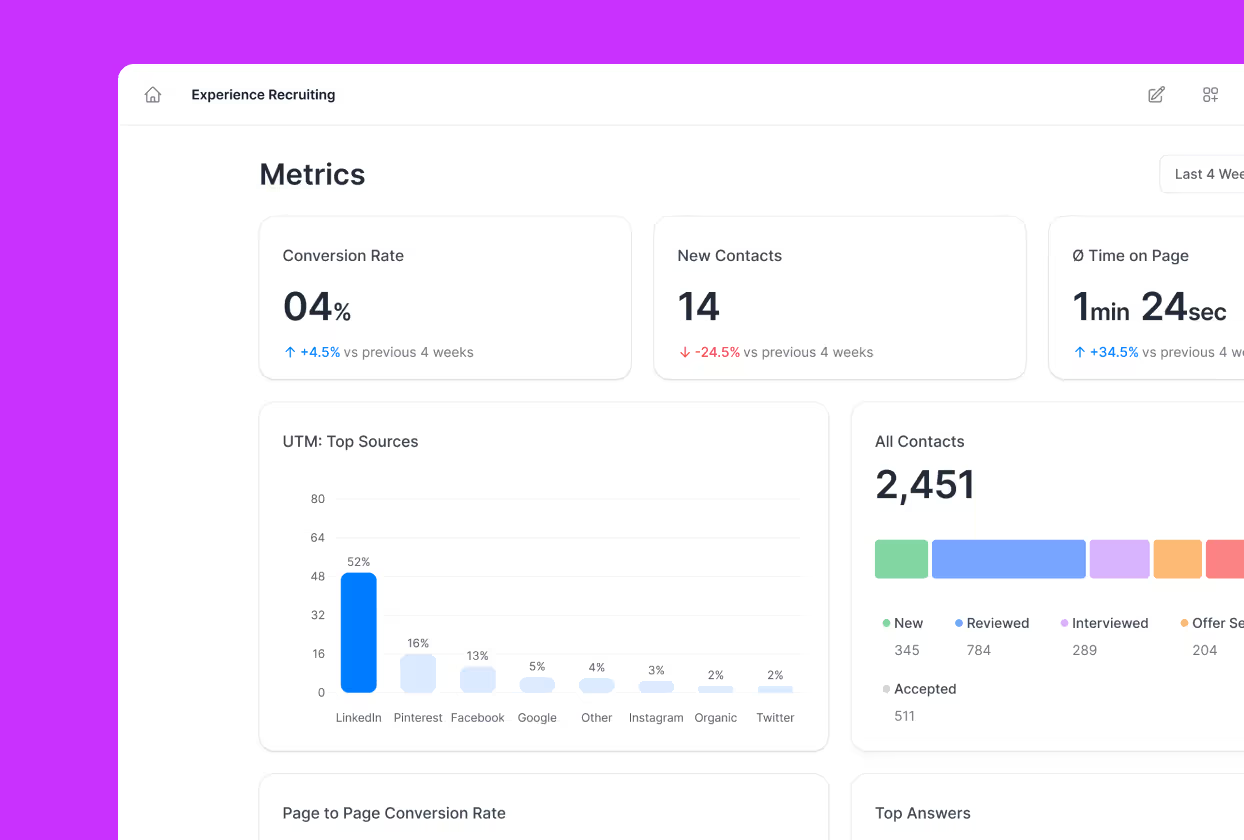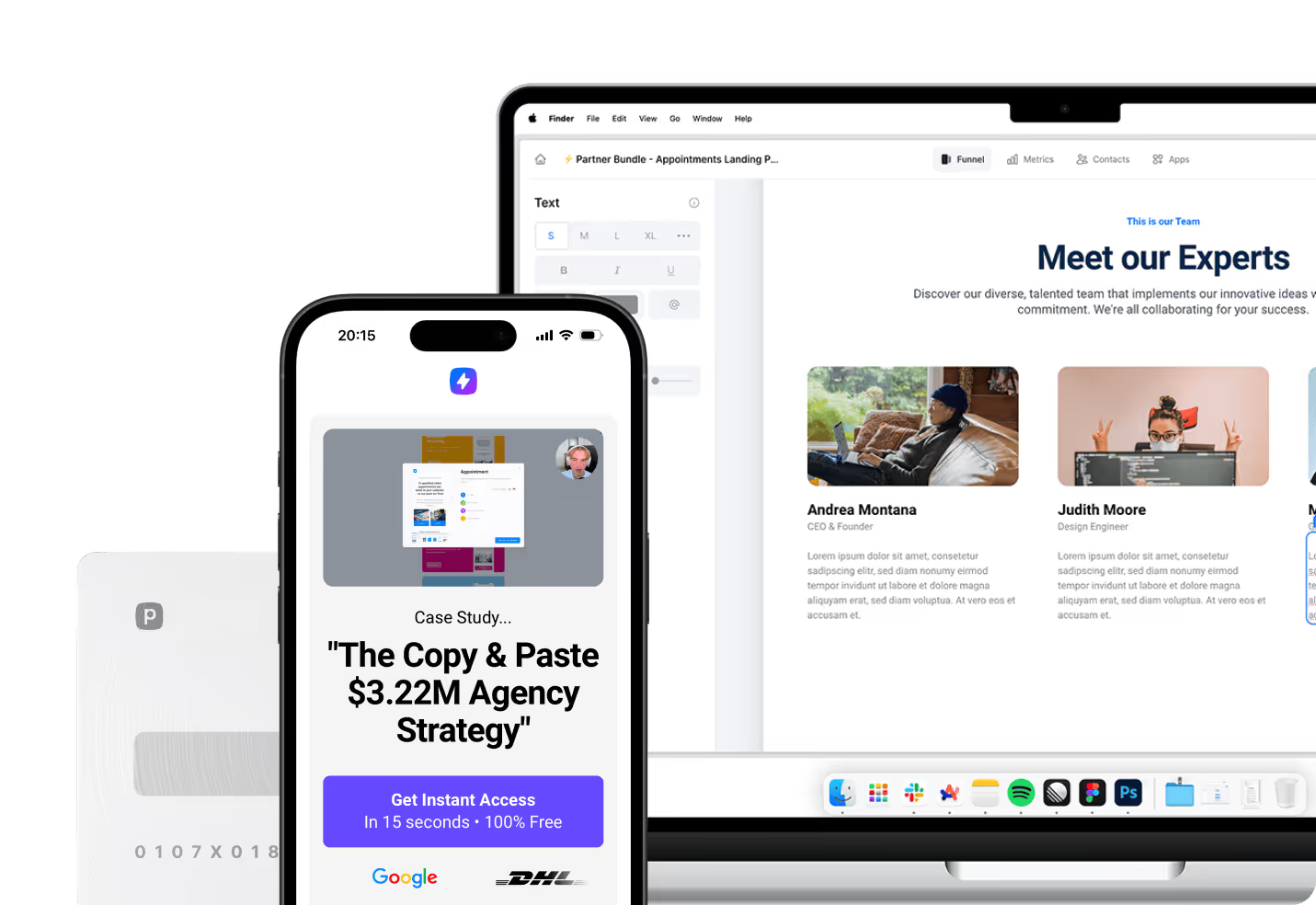Digital marketing success in 2025 depends heavily on choosing the right platform for your specific business needs, and this decision has become more critical than ever as competition intensifies across all industries. With remote work continuing to reshape how businesses operate and consumer behavior shifting toward more personalized online experiences, marketers are increasingly looking for tools that can deliver both efficiency and results. Two platforms that consistently emerge as top contenders are Kartra, which offers comprehensive marketing automation in one integrated system, and Instapage, which specializes exclusively in creating high-converting landing pages with advanced optimization features.
What Makes Kartra Stand Out as an All-in-One Platform
Kartra positions itself as the comprehensive marketing solution that combines multiple essential tools under one unified dashboard. This all-in-one approach eliminates the headache of managing separate subscriptions for email marketing, landing pages, membership sites, and checkout systems. The platform’s strength lies in how seamlessly these components work together, creating a cohesive customer experience from first contact to final purchase.
The drag-and-drop page builder serves as Kartra’s foundation, allowing users to create professional-looking pages without any coding knowledge. What sets this builder apart is its deep integration with the platform’s email marketing system, enabling automatic lead capture and sophisticated follow-up sequences. This connection means your landing pages don’t just collect leads—they immediately trigger personalized nurturing campaigns based on visitor behavior and preferences.
Beyond basic page creation, Kartra excels in areas that many specialized tools overlook. The platform includes a complete membership site builder, perfect for businesses selling online courses or subscription content. Its checkout system supports advanced features like one-click upsells and order bumps, maximizing revenue from each customer interaction. Additionally, Kartra’s built-in help desk and calendar booking functionality transform it into a complete business management solution.
Kartra’s Unique Marketing Automation Features
Kartra’s automation capabilities extend far beyond simple email sequences, offering behavioral-based triggers that adapt to user actions across the entire platform. The system can automatically adjust content, send targeted messages, and even modify membership access based on how customers interact with your pages, videos, and emails. This level of personalization happens without manual intervention, creating truly dynamic customer journeys.
The platform’s analytics dashboard provides comprehensive insights across all marketing channels, tracking everything from email performance to video engagement rates. This holistic view helps identify bottlenecks in your marketing funnel and optimize the entire customer journey. Kartra’s “if this, then that” logic enables complex automation workflows that would typically require multiple tools and integrations to achieve.
Key automation advantages that set Kartra apart from competitors:
- Behavioral triggers: Automatically respond to specific user actions like video completion or page visits
- Cross-channel messaging: Coordinate email, SMS, and in-app notifications from one central system
- Dynamic content: Personalize page content based on user history and preferences
- Membership automation: Automatically grant or revoke access based on payment status or engagement levels
Why Instapage Dominates Landing Page Creation
Instapage takes a completely different approach, focusing exclusively on creating the highest-converting landing pages possible. This specialization allows the platform to offer features and capabilities that generalist tools simply cannot match. The platform’s grid-free editor provides pixel-perfect control over every element, enabling designers to create truly unique experiences that align perfectly with brand guidelines.
The template library contains over 500 professionally designed options, each optimized for specific industries and campaign types. These templates serve as starting points rather than rigid constraints, thanks to Instapage’s flexible design system. The Instablocks feature allows marketers to create reusable content sections that maintain consistency across multiple campaigns while still permitting customization for specific audiences.
Speed optimization represents another area where Instapage excels beyond typical landing page builders. The Thor Render Engine ensures lightning-fast loading times across all devices, directly impacting conversion rates and search engine rankings. This technical excellence extends to mobile optimization, with AMP support creating ultra-fast experiences for smartphone users.
Advanced Conversion Optimization Tools
Instapage’s conversion optimization features go far beyond basic A/B testing, offering sophisticated tools that help marketers understand exactly how visitors interact with their pages. The heatmap functionality provides visual representations of user behavior, showing precisely where people click, how far they scroll, and which elements capture attention. This data proves invaluable for making informed design decisions rather than relying on guesswork.
The platform’s A/B testing capabilities allow simultaneous testing of multiple page variations with statistical significance calculations built in. This ensures that optimization decisions are based on reliable data rather than premature conclusions. The testing system can automatically redirect more traffic to winning variations, maximizing conversions while experiments are still running.
Advanced features that make Instapage the conversion optimization leader:
- Heatmap analysis: Visual insights into user behavior and interaction patterns
- Multi-variant testing: Test multiple page elements simultaneously for faster optimization
- AdMap technology: Visual representation connecting ads to specific landing pages
- 1:1 personalization: Dynamic content that adapts based on the specific ad clicked
How Do These Platforms Compare on User Experience
The user experience differs dramatically between these platforms, reflecting their distinct philosophies and target audiences. Kartra’s interface presents a comprehensive dashboard that provides access to every aspect of your marketing operation from a single location. While this completeness is powerful, it can feel overwhelming for new users who must navigate multiple menus and understand how various components interconnect.
Kartra’s learning curve is steeper due to its extensive feature set, but the platform provides comprehensive training resources to help users master its capabilities. The guided setup process walks new users through essential configurations, while the Kartranaut training portal offers advanced tutorials on marketing strategy implementation. This educational approach helps users maximize the platform’s potential rather than just learning basic functions.
Instapage prioritizes simplicity and focus, with a clean interface centered around landing page creation and optimization. The streamlined dashboard makes it easy to manage multiple pages, access analytics, and launch new experiments without confusion. This focused approach allows teams to become productive quickly, especially when their primary goal is creating high-converting landing pages for advertising campaigns.
Transform Your Mobile Conversions with Perspective
While traditional platforms like Kartra and Instapage offer powerful capabilities, Perspective Funnels emerges as a compelling modern alternative specifically designed for today's mobile-first reality. Unlike desktop-adapted solutions that struggle to match mobile user behavior, Perspective is built from the ground up with mobile optimization as its core foundation. This innovative funnel builder approach directly addresses the fact that audiences are scrolling social media on their phones, requiring funnels that match their natural mobile experience rather than forcing desktop interactions onto smaller screens.
What sets Perspective apart is its unique balance between customization and simplicity, filling the gap between comprehensive platforms and specialized tools. The platform combines lightning-fast loading speeds with modern design templates and interactive tools that keep mobile users engaged. Built-in CRM capabilities, advanced analytics, and personalization features eliminate the need for multiple subscriptions while delivering results that can boost conversion rates up to 700% and reduce funnel build time by 42x. With seamless connections to over 2,000 apps including Google Analytics, Facebook Pixel, and Calendly, Perspective offers the integration flexibility of specialized tools while maintaining the operational simplicity that busy marketers and agencies demand.
Collaboration and Team Management
Team collaboration capabilities vary significantly between these platforms, with each taking a different approach to multi-user workflows. Instapage excels in this area with real-time collaboration tools that allow team members to comment directly on page elements, streamlining the review and approval process. This feature proves particularly valuable for agencies managing multiple clients or large marketing teams with complex approval workflows.
Kartra offers user permissions and team access controls but lacks the sophisticated collaboration features found in Instapage. The platform’s approach assumes that team members will work within their designated areas rather than collaborating extensively on individual projects. This works well for smaller teams where roles are clearly defined but may create bottlenecks in larger organizations.
Both platforms support multiple user accounts with varying permission levels, but Instapage’s collaborative features make it more suitable for teams that need to work together closely on landing page projects. Kartra’s strength lies in providing each team member with access to the tools they need without requiring extensive collaboration on individual elements.
What Are the Real Costs and Value Propositions
Pricing structures reveal fundamental differences in how these platforms position themselves in the market. Kartra operates on a tiered system starting at $99 monthly for the Starter plan, which includes basic features and supports up to 2,500 leads. The Silver plan at $199 monthly removes most restrictions and supports 12,500 leads with unlimited emails, while higher tiers accommodate larger businesses with expanded capabilities and higher lead limits.
Instapage takes a simpler approach with two primary options: the Business plan at $199 monthly and custom-priced Enterprise solutions. Unlike Kartra, Instapage doesn’t limit based on lead count but instead restricts the number of published landing pages. This pricing model works well for businesses focused primarily on advertising campaigns rather than comprehensive lead nurturing.
The true cost comparison extends beyond monthly fees to include additional tools required for complete marketing operations. Instapage users typically need separate solutions for email marketing, checkout functionality, and membership management, potentially adding hundreds of dollars in monthly expenses. Kartra’s higher entry price may actually represent better value for businesses needing its complete feature set, as it eliminates multiple separate subscriptions.
ROI Considerations for Different Business Types
Return on investment calculations depend heavily on your specific business model and marketing strategy. Businesses running extensive advertising campaigns may find Instapage’s conversion optimization features generate significant returns through improved ad performance. The platform’s specialized tools can often increase conversion rates enough to justify the investment through reduced advertising costs per acquisition.
Kartra’s value proposition centers on operational efficiency and reduced complexity rather than pure conversion optimization. Businesses using multiple marketing tools often find that Kartra’s integrated approach saves time and reduces technical headaches, freeing up resources for strategic activities. The platform’s comprehensive analytics also provide insights that would require multiple tools to achieve elsewhere.
Service-based businesses and course creators often find Kartra’s membership site and automation features particularly valuable, as these capabilities would require significant additional investments if purchased separately. E-commerce businesses focused on advertising may prefer Instapage’s specialized optimization tools, especially when combined with existing e-commerce platforms that handle checkout and fulfillment.
Which Platform Integrates Better With Your Tech Stack
Integration capabilities play a crucial role in determining how well either platform will fit into your existing marketing technology ecosystem. Kartra deliberately minimizes integration requirements by including most essential marketing functions natively within the platform. This approach reduces complexity but may limit flexibility for businesses already invested in specific tools for particular functions.
Essential integrations that Kartra does support include major payment processors like PayPal and Stripe, email delivery services for improved deliverability, and tracking tools like Google Analytics and Facebook Pixel. The platform also connects with popular SMS providers and offers Zapier integration for connecting with thousands of additional applications. However, the core philosophy remains focused on reducing rather than expanding external dependencies.
Instapage takes the opposite approach with an extensive integration ecosystem connecting to over 120 popular marketing tools. This includes major CRM platforms, email marketing services, marketing automation tools, webinar platforms, and analytics services. The broad connectivity reflects Instapage’s role as a specialized component within larger marketing technology stacks rather than a comprehensive solution.
API Access and Custom Integrations
Both platforms offer API access for custom integrations, but with different levels of documentation and support. Instapage provides comprehensive API documentation and actively supports developers building custom connections, reflecting its positioning as part of larger marketing ecosystems. The platform’s webhook capabilities enable real-time data sharing with external systems, crucial for businesses with complex attribution requirements.
Kartra’s API access is more limited, focusing on essential data exchange rather than comprehensive system integration. This approach aligns with the platform’s philosophy of providing complete functionality internally rather than serving as one component in a larger system. Businesses requiring extensive custom integrations may find Instapage’s more open architecture better suited to their needs.
The choice between these integration approaches depends on your existing technology investments and future scalability plans. Companies with significant investments in specific CRM or marketing automation platforms may prefer Instapage’s extensive connectivity options. Businesses looking to simplify their technology stack will appreciate Kartra’s comprehensive internal capabilities that reduce integration requirements.
Best Practices for Platform Selection Success
Choosing between Kartra and Instapage requires careful evaluation of your current needs and future growth plans. Start by auditing your existing marketing technology stack to identify gaps and redundancies that either platform could address. Calculate the total cost of ownership including not just platform fees but also additional tools required for complete functionality. Consider your team’s technical expertise and available time for learning new systems, as this significantly impacts implementation success. Evaluate your primary marketing channels and whether you need specialized landing page optimization or comprehensive marketing automation. Test both platforms during their trial periods with actual campaigns rather than just exploring features, as real-world usage reveals important usability differences.
Platform selection success also depends on aligning tool capabilities with your business model and growth stage. Early-stage businesses often benefit from Kartra’s comprehensive approach that eliminates the need to research and integrate multiple tools. Established businesses with existing marketing stacks may find Instapage’s specialized capabilities more valuable, especially when conversion optimization directly impacts substantial advertising investments.
Consider your long-term scalability requirements when making this decision. Kartra’s integrated approach can support significant business growth without requiring platform changes, but may become limiting if you need highly specialized features in specific areas. Instapage’s focused approach excels in its specialty but requires additional tools for comprehensive marketing operations, potentially creating complexity as your business grows.
Start Building Your Marketing Success Today
Both Kartra and Instapage offer powerful capabilities that can significantly impact your marketing results, but success depends on choosing the platform that aligns with your specific needs and business goals. Kartra excels for businesses seeking comprehensive marketing automation and simplified technology stacks, while Instapage dominates when conversion optimization and landing page performance are primary concerns. Your decision should prioritize the areas where improvements will have the greatest impact on your bottom line.
The most successful marketers focus on mastering one platform thoroughly rather than switching between tools constantly. Whichever platform you choose, commit to learning its advanced features and optimization techniques to maximize your investment. Both platforms offer extensive training resources and supportive communities that can accelerate your learning curve and help you achieve better results faster than trying to figure everything out independently.
For mobile-driven marketers who prioritize speed, personalization, and measurable results, Perspective Funnels represents a smart alternative that bridges the gap between comprehensive platforms and specialized tools. In today’s mobile-first environment, choosing a platform specifically designed for how your audience actually behaves online can make the difference between average performance and exceptional conversion rates. The platform’s focus on interactive, fast-loading experiences aligns perfectly with modern consumer expectations and can significantly impact your bottom line results.


















